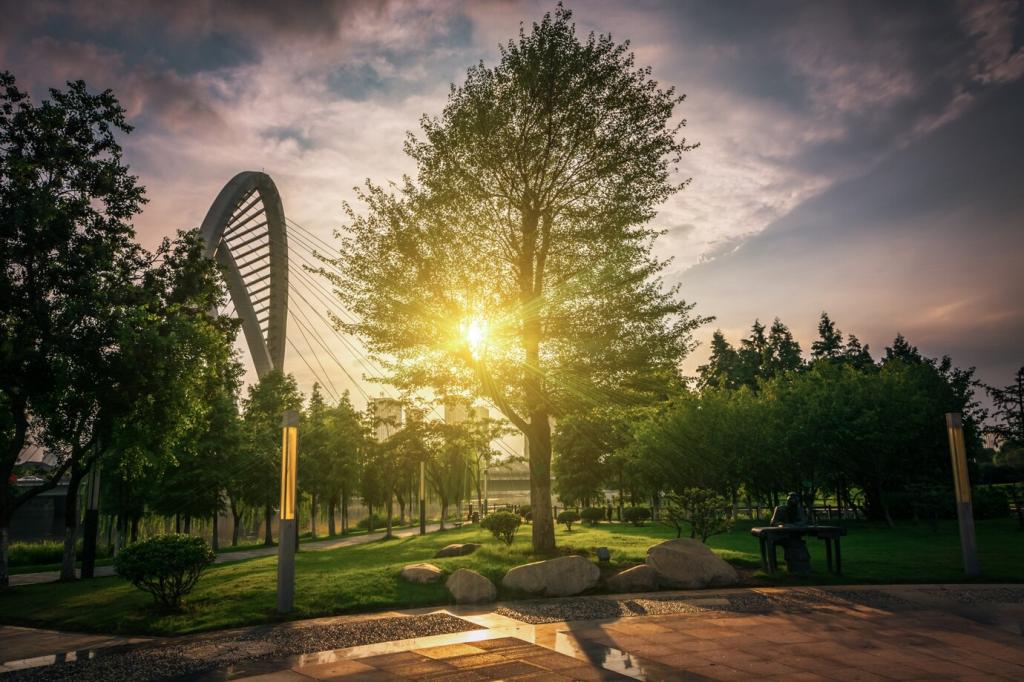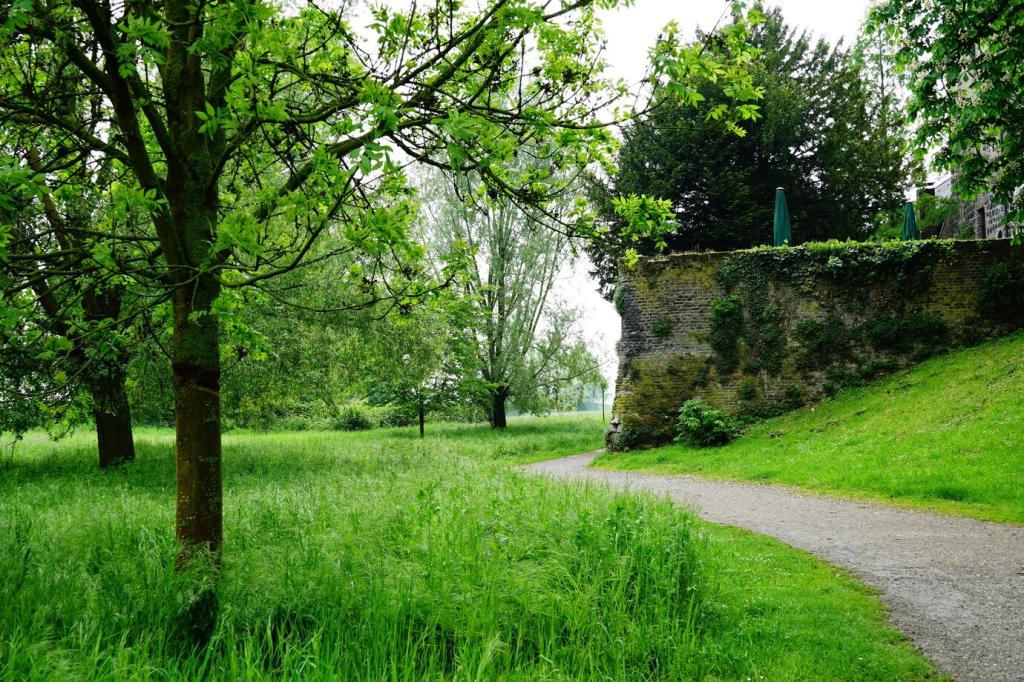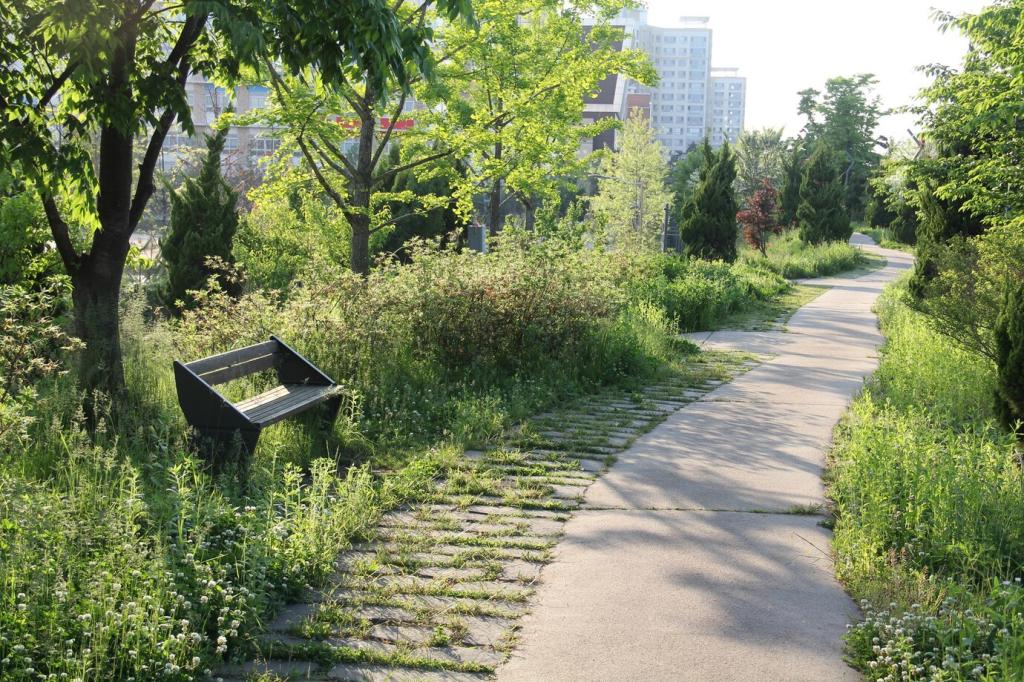Cutting-Edge Green Landscaping Solutions
Discover the future of landscaping with innovative, eco-friendly solutions designed to elevate the beauty of your outdoor spaces while minimizing environmental impact. Modern green landscaping combines advanced technologies, sustainable practices, and creative design to offer transformative results for residential, commercial, and community environments. Embracing these cutting-edge techniques not only enhances curb appeal but also contributes actively to environmental preservation, helping you foster a healthier, more resilient landscape. Explore how today’s pioneering green landscaping approaches can redefine your connection to the natural world.

Sustainable Plant Selection and Biodiversity
Native plant integration is at the heart of sustainable landscaping. These plants are specially adapted to local conditions, which means they require far less irrigation and fertilization compared to non-native species. They thrive naturally, offering resilience against local pests and weather extremes. Incorporating native plants also promotes habitat connectivity for native birds, insects, and mammals, so your green space becomes an active part of local ecological networks. Beyond resilience and lower maintenance, native plants often provide seasonally dynamic displays—flowers, berries, and foliage that adapt to yearly cycles—delighting the senses while conserving resources.

Smart Irrigation and Water Management
Drip Irrigation Systems
Drip irrigation systems represent a significant leap forward in water conservation for landscaped areas. Unlike traditional sprinklers, drip irrigation delivers water directly to the root zones of plants through a network of tubes and emitters, dramatically reducing evaporation and runoff. This targeted approach ensures plants receive adequate moisture with minimal waste, leading to healthier growth and lower utility bills. Automated controllers can be programmed to adjust watering schedules based on weather conditions, further optimizing water use. The gentle delivery of water prevents soil compaction, safeguards delicate plants, and supports robust, sustainable growth throughout the landscape.
Rainwater Harvesting Solutions
Rainwater harvesting captures and stores rain runoff from roofs or other surfaces for later use in landscape irrigation. This eco-friendly practice not only reduces the demand on municipal water supplies but also helps manage stormwater, reducing the risk of erosion and localized flooding. Modern systems include aesthetically pleasing storage tanks that blend seamlessly with garden design. Coupled with filtration and distribution technology, rainwater harvesting systems can supply clean, sustainable water for garden beds, lawns, and ornamental features. Leveraging natural precipitation is a proactive way to create self-sustaining, drought-resilient landscapes that stand up to changing environmental conditions.
Xeriscaping for Dry Climates
Xeriscaping is a landscape design philosophy centered around water conservation, especially valuable in arid or drought-prone regions. By selecting drought-tolerant plants and minimizing areas of water-intensive turf, xeriscapes require only a fraction of the irrigation of conventional gardens. Strategic use of mulch helps retain soil moisture and suppress weeds, while contouring and soil amendment techniques further aid in water retention and root development. The result is a visually striking, low-maintenance landscape that not only conserves water but also thrives in challenging conditions, representing the intersection of sustainability and artistry.

Permeable Pavers
Permeable pavers are engineered to allow rainwater to filter through gaps between stones or blocks, directly into the soil below. This helps mitigate stormwater runoff, reduce flooding risks, and recharge groundwater reserves. Compared to traditional impermeable surfaces, permeable pavers prevent the formation of puddles and erosion while offering the same practicality and aesthetics for patios, driveways, and walkways. They come in a range of colors, textures, and design options, blending seamlessly with any landscape vision. By choosing permeable paving, you actively contribute to sustainable water management in your community.
Recycled and Green Materials
Using recycled and green materials in hardscaping—from composite decking and benches to reclaimed brick and glass aggregate—reduces demand for virgin resources and diverts waste from landfills. These materials often boast durability and unique visual character, with each application telling a story of resourcefulness. Choosing composites, certified woods, or repurposed stone can lower the environmental footprint of your project while still delivering strength and beauty. Green hardscaping makes it possible to enjoy all the structural and aesthetic benefits of traditional materials, without compromising on sustainability or style.
Solar-Powered Outdoor Lighting
Solar-powered outdoor lighting solutions combine energy efficiency with modern design, providing illumination for pathways, gardens, and architectural features using free, renewable energy from the sun. Advances in solar technology now enable these lights to shine brighter and last longer, even after cloudy days. Installation is straightforward, requiring no trenching or wiring, which minimizes landscape disruption. Beyond energy savings and convenience, solar lighting dramatically reduces greenhouse gas emissions compared to grid-powered alternatives, making it an appealing option for eco-conscious property owners seeking both safety and ambiance.
